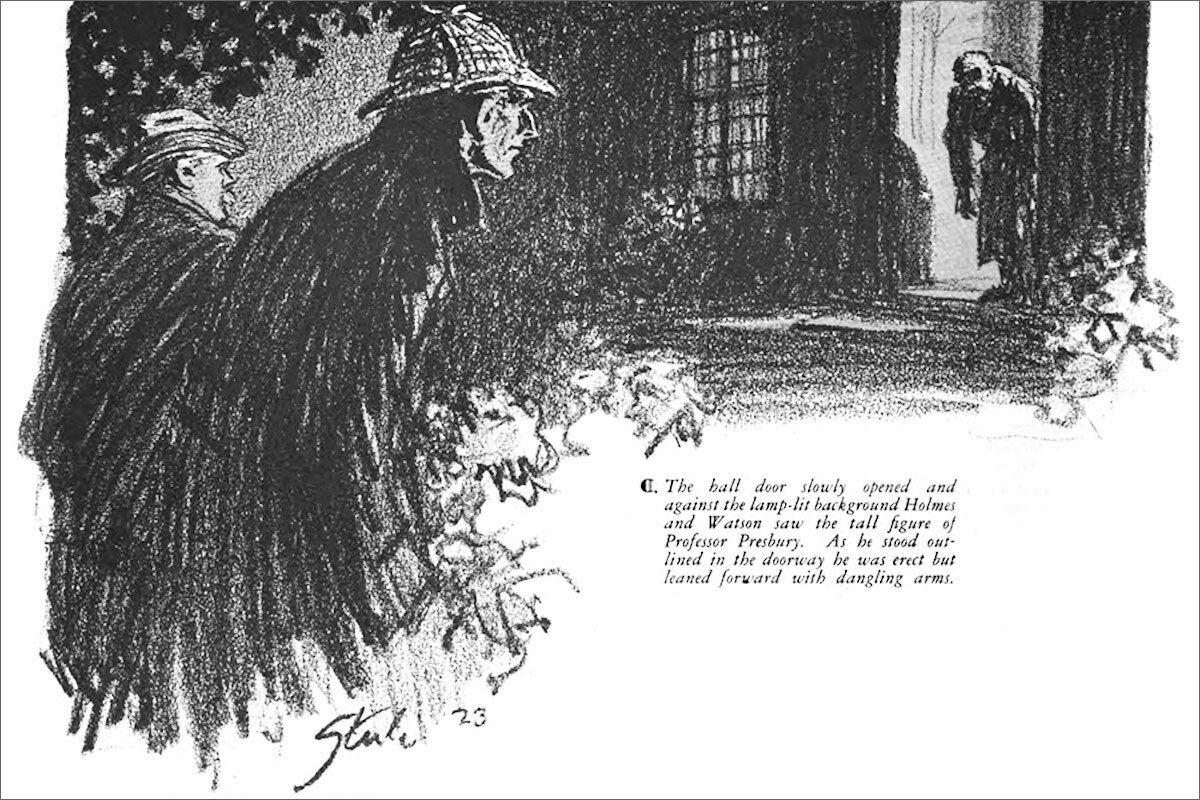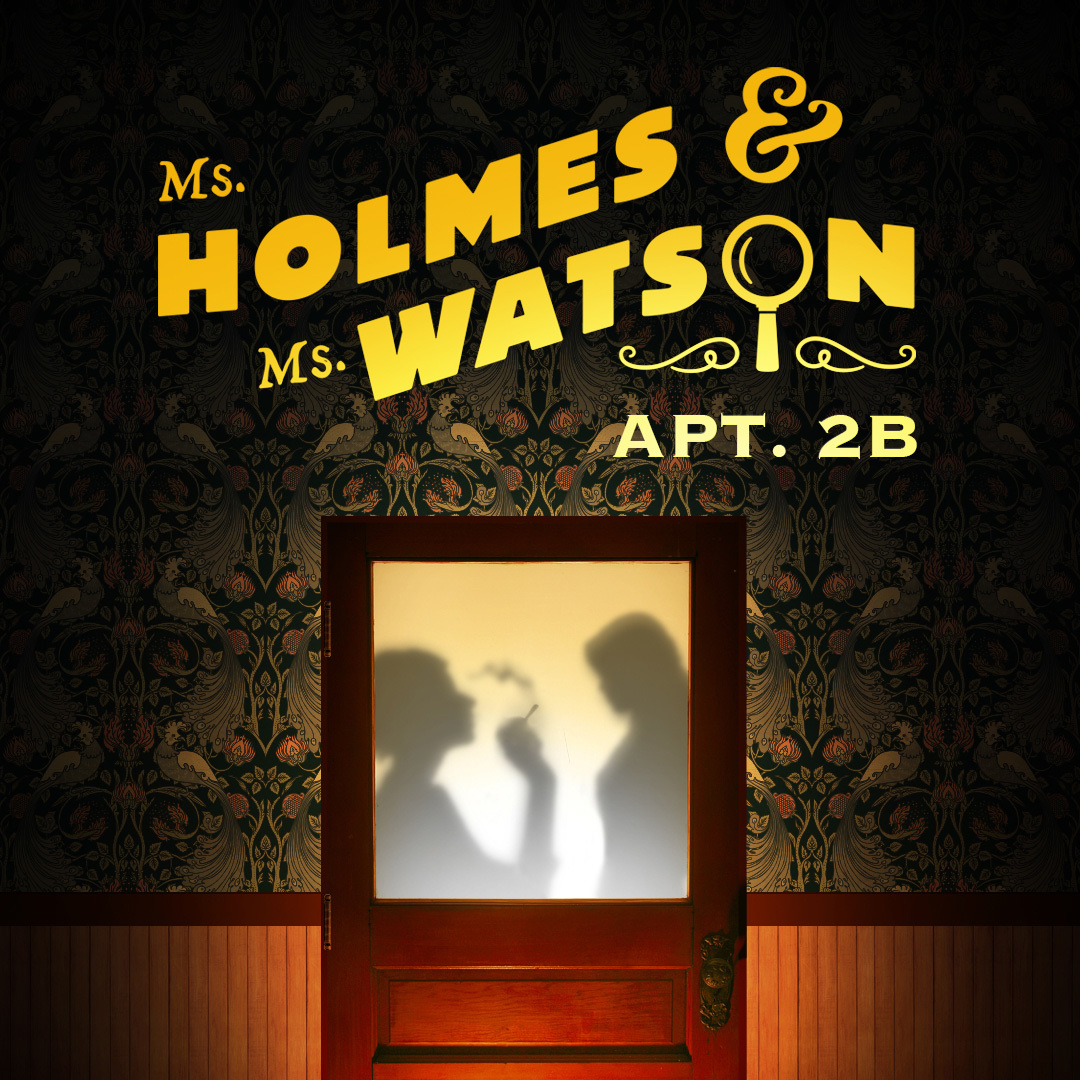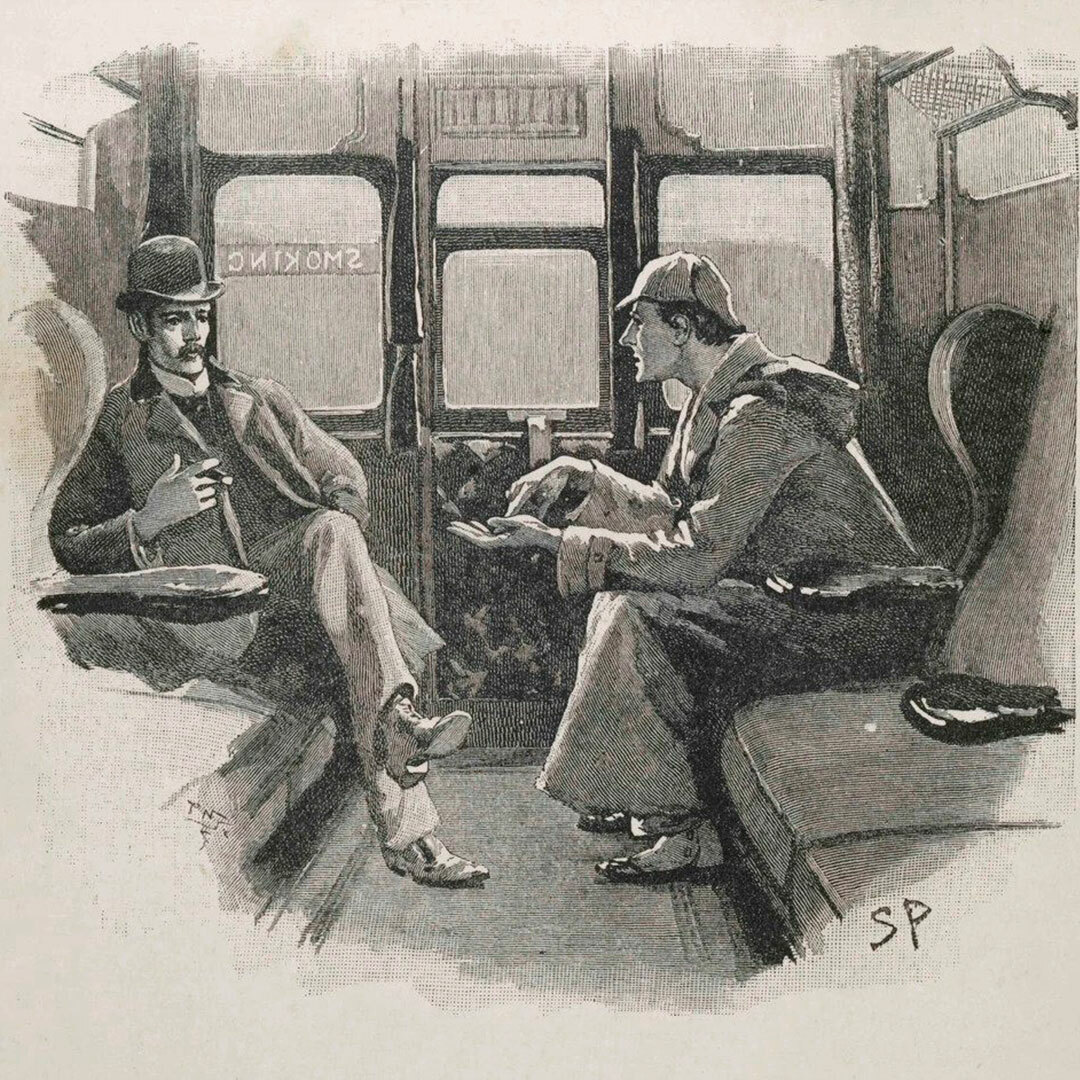List of Sherlock Holmes Stories Referenced in Ms. Holmes and Ms. Watson – Apt. 2B
A Study in Scarlet (1887)
The homicides of Enoch Drebber (by poison) and his secretary Joseph Strangerson (by stabbing) are investigated and the word “RACHE” (German for “revenge”) is written on the wall near both bodies. This story marks the first appearance of the characters Sherlock Holmes and Watson. The story’s title comes from Holmes’ line, “There’s the scarlet thread of murder running through the colourless skein of life, and our duty is to unravel it, and isolate it, and expose every inch of it.” Much of the first act of the play is modeled after this plot.
The Adventure of the Creeping Man (1923)
Professor Presbury has a sudden and bizarre change of behavior following the engagement of his daughter, Edith, to his personal secretary, Trevor Bennett. He is observed scampering on all fours, climbing on the creeper (the plants growing along the walls), and tormenting his dog, who doesn’t recognize him and attacks him frequently. (Illustration at top of page by Frederic Dorr Steele for Arthur Conan Doyle's Sherlock Holmes story "The Adventure of the Creeping Man" published in Hearst's International in March 1923..)
The Adventure of the Sussex Vampire (1921)
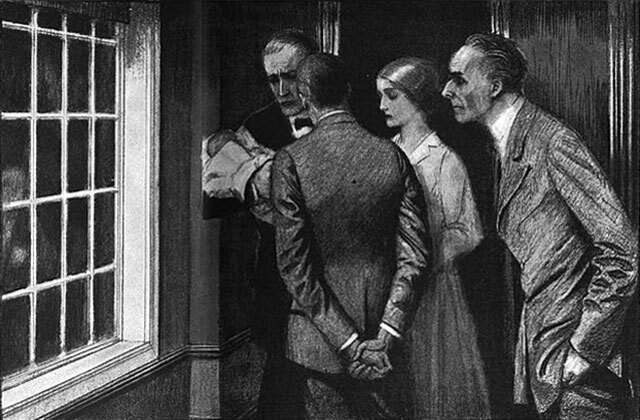
Illustration by W. T. Benda for The Sussex Vampire (1924), published in Hearst's International.
Robert Ferguson is convinced his second wife has been sucking their baby son’s blood. He is also concerned for his 15-year-old son Jack, whose mother is deceased. At their home in Sussex, Mrs. Ferguson has locked herself in her room and refuses to come out. She is only attended by her maid, Dolores, who brings her meals. Holmes suspects that she is not actually a vampire.
The Disappearance of Lady Frances Carfax (1911)
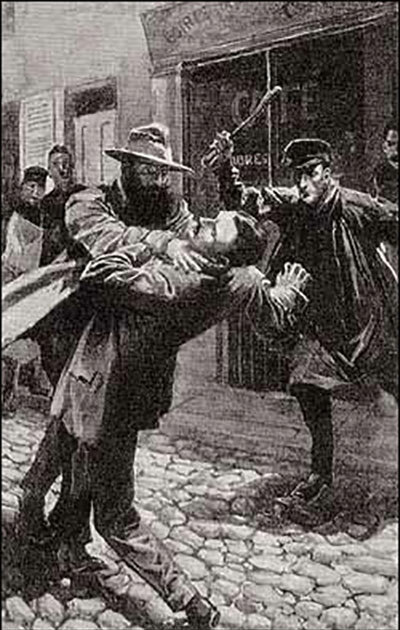
Illustration by Alec Ball for The Disappearance of Lady Frances Carfax (1911), in The Strand Magazine.
Holmes is too busy in London, so he sends Watson to Lausanne to investigate the disappearance of Lady Frances Carfax, an unwed woman denied a rich inheritance because of her gender. This is one of the few stories where Watson must act alone and try his best with Holmes left in the background. In the play, Mrs. Hudson mentions a case as “The Consumption of Lady Carfax’s Corpse” as one of Holmes’ pre-pandemic exploits.
The Adventure of the Devil’s Foot (1910)
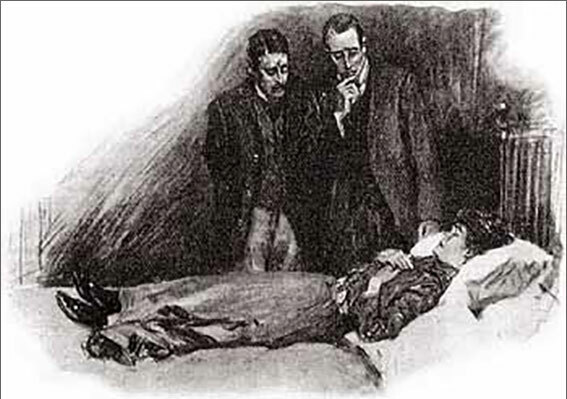
Illustration by Gilbert Holiday for The Adventure of the Devil's Foot (1910), in The Strand Magazine.
While Holmes and Watson are on a seaside holiday at Poldhu in Cornwall, they find three siblings, George, Owen, and Brenda Tregennis, seated at a table, dead with no signs of violence. The cause is found to be a poison from a plant called Radix pedis diaboli (“Devil’s-foot root” in Latin), which was made into a powder and burned. Inhalation of the fumes would result in madness or death.
The Adventure of the Dancing Men (1903)

Second phrase code from The Adventure of Dancing Men (1903).
Hilton Cubitt of Ridling Thorpe Manor in Norfolk visits Sherlock Holmes and shows him a piece of paper with a line of stick figures that resemble dancing men. Before Cubitt married his American wife, Elsie Patrick, she asked him to never ask about her past. She becomes fearful when the letters start arriving but won’t tell him why. Figuring that it is a substitution cipher, Holmes is able to crack the code by frequency analysis and realizes the Cubitts are in danger. In the play, Holmes refers to this story as “The Case of the Dreadful Dancing Men.”
The Adventure of the Speckled Band (1892)
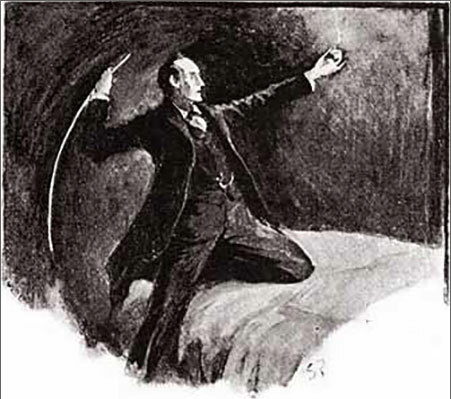
Illustration for The Speckled Band (1892), published in The Strand Magazine.
Helen Stoner fears that her rageful stepfather, Dr. Grimesby Roylott, is threatening her life. Her twin sister died two years ago, and her last words were, “the speckled band” but Helen could not figure out what she meant. In the end, “the speckled band” turns out to be a venomous snake (a Swamp Adder). The short story became a defining part of detective fiction, and Sir Arthur Conan Doyle himself called it his best story.
The Adventure of the Blue Carbuncle (1892)
The Blue Carbuncle, a very valuable gemstone, is stolen from the hotel suite of the Countess of Morcar. It is found inside a Christmas goose that was going to be cooked for Christmas dinner. Holmes and Watson go on to track down where the goose came from so they can identify the thief. In the play, during a montage, the case is referenced as “The Adventure of the Blue Goose.”
The Hound of the Baskervilles (1902)
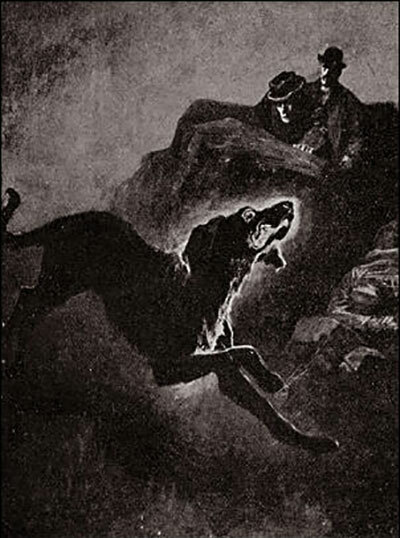
Illustration for The Hound of the Baskervilles (1902).
Legend states that a curse runs in the Baskerville family– a huge demonic hound haunts the mires of Dartmoor, killing men of the Baskerville family. As requested by Dr. James Mortimer, Holmes and Watson travel to investigate and hopefully prevent the death of the next heir, Sir Henry Baskerville, although Holmes dismisses the supernatural aspects of the case. In the play, Watson exclaims that this is the most famous Sherlock Holmes story.
Portland Center Stage is committed to identifying & interrupting instances of racism & all forms of oppression, through the principles of inclusion, diversity, equity, & accessibility (IDEA).


